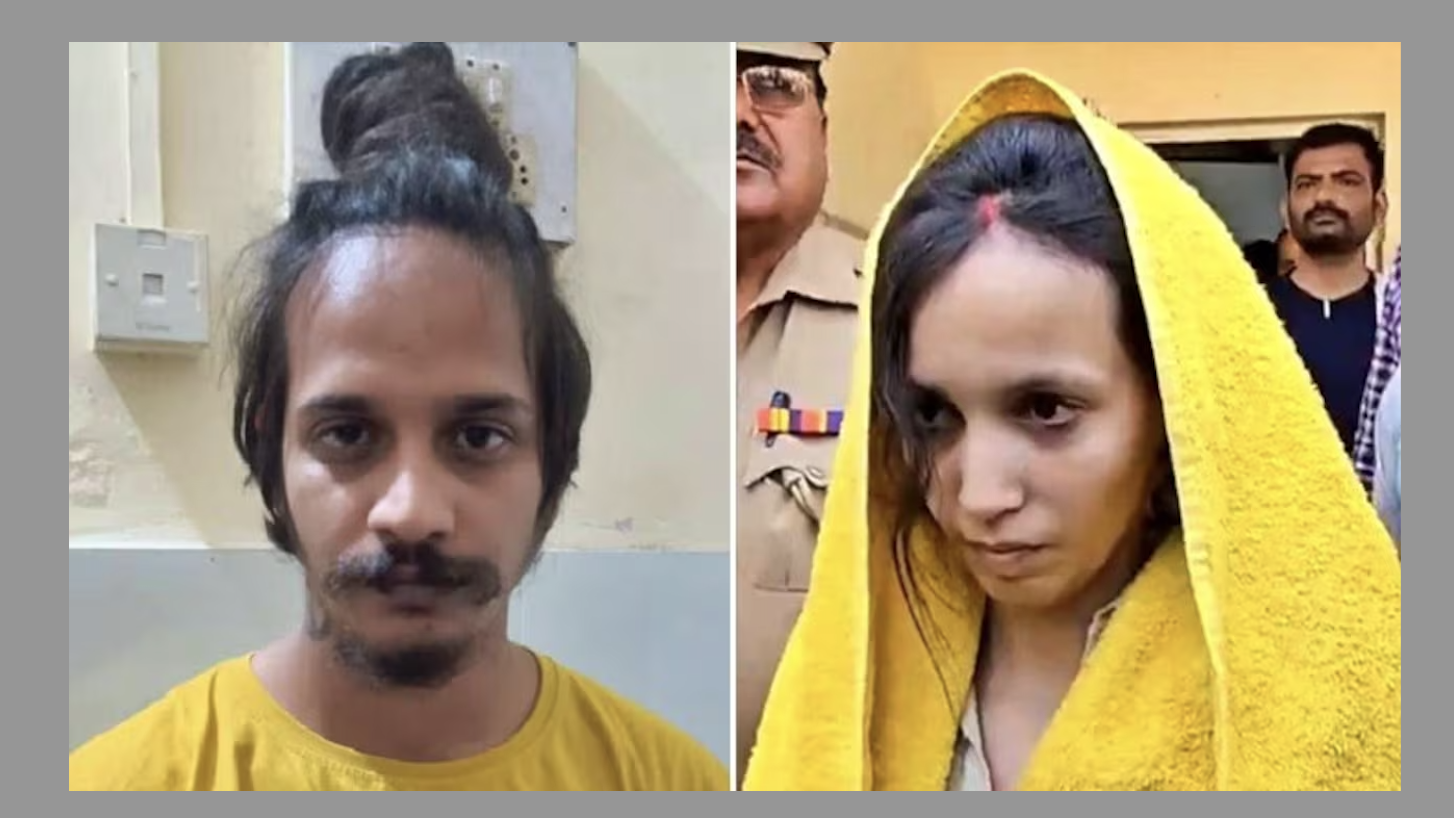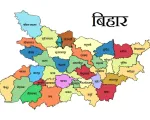High-Profile Cases in Recent Years
In 2024 and 2025, several cases of women allegedly killing their male partners dominated headlines, particularly in Hindi-speaking regions of India. These incidents, often involving intricate plots, extramarital affairs, or deep-seated marital discord, captured public attention due to their shocking nature and the media’s dramatic portrayal. Below are some of the most widely reported cases, each revealing a unique facet of intimate partner violence:
The Sonam Raghuvanshi Case (Meghalaya, 2025): In a case that shook the nation, Sonam Raghuvanshi from Indore was accused of orchestrating the murder of her husband, Raja Raghuvanshi, during their honeymoon in Meghalaya. The couple, recently married, was on what was supposed to be a romantic getaway when Raja’s body was discovered in a deep ravine. Investigations revealed that Sonam, allegedly in collaboration with her lover and hired accomplices, planned the murder. She later surrendered in Ghazipur, Uttar Pradesh, while three other suspects were arrested. The case, dubbed the “Honeymoon Murder” by Hindi media, went viral on social platforms, with outlets like Aaj Tak and Amar Ujala running extensive coverage. The sensational nature of the story, combined with the betrayal element, made it a focal point of public fascination.
The Muskan Rastogi Case (Meerut, 2025): In Meerut, Uttar Pradesh, Muskan Rastogi and her lover, Sahil Shukla, were accused of murdering Muskan’s husband, Saurabh Rajput, a merchant navy officer. Saurabh had returned from London to surprise his wife, only to meet a gruesome fate. According to reports, Muskan and Sahil allegedly killed Saurabh, dismembered his body, and concealed it in a cement-filled drum. This case, reported extensively by NDTV India and other outlets, shocked the public due to its brutality and the calculated nature of the crime. The media labeled it a “heartless murder,” and the story fueled discussions about infidelity and betrayal in modern marriages.
The Sangli Case (Maharashtra, 2025): In Sangli, Maharashtra, a 27-year-old woman was arrested for killing her 54-year-old husband with an axe, just three weeks after their marriage. The murder took place on Vat Purnima, a day when Hindu wives traditionally pray for their husbands’ long lives, adding a layer of irony to the tragedy. Hindi news channels like Zee News sensationalized the case, with headlines emphasizing the cultural contradiction. The incident raised questions about the pressures of arranged marriages and the rapid escalation of marital conflicts.
The Siddharthnagar Case (Uttar Pradesh, 2025): In Siddharthnagar, Sangeeta Devi (35) and her lover, Anil Shukla (27), were accused of poisoning Sangeeta’s husband, Kannan Kumar, after 18 years of marriage. The couple allegedly disposed of his body in the Rapti River. This case, covered by outlets like ABP News, highlighted the role of extramarital affairs in driving such extreme actions. The public was particularly shocked by the long duration of the marriage before the crime occurred, prompting discussions about hidden tensions in long-term relationships.
The Ravina Case (Bhiwani, Haryana, 2025): In Bhiwani, Haryana, a YouTuber named Ravina was accused of conspiring with her lover, Suresh, to murder her husband, Praveen. The motive reportedly stemmed from Praveen’s objections to Ravina’s social media content, which led to frequent arguments. Ravina and Suresh allegedly strangled Praveen and dumped his body in a drain. This case, widely discussed on platforms like X and in Hindi news, underscored the growing influence of social media in personal conflicts and its potential to escalate disputes to deadly outcomes.
The Auraiya Case (Uttar Pradesh, 2025): In Auraiya, a 22-year-old woman named Pragati, along with her lover Anurag, was accused of hiring hitmen to kill her husband, Dilip, just two weeks after their wedding. The case, termed a “contract killing” by Hindi media, highlighted the shocking speed at which marital dissatisfaction can lead to extreme measures. The involvement of hired killers added a layer of premeditation that captivated public attention.
The Moradabad Case (Uttar Pradesh, 2025): In Moradabad, a woman and her lover were accused of killing her husband and keeping his body in a car for two days before disposing of it in a jungle. This case, covered extensively by ABP News, shocked viewers due to the audacity of the act and the prolonged concealment of the crime. The media’s focus on the macabre details further amplified public interest.
Statistical Context and Trends
While specific data on women killing their male partners is limited, the NCRB’s 2022 report provides some context. Out of 28,522 reported murder cases in India, approximately 2,821 were linked to motives such as love affairs, infidelity, illicit relationships, or marital disputes. Of these, around 275 cases involved husbands being killed by their wives, compared to 225 cases of wives being killed by their husbands. While these numbers suggest that intimate partner homicides occur in both directions, the media’s focus on women as perpetrators has disproportionately highlighted these cases.
Globally, according to the United Nations and World Health Organization, men are far less likely to be killed by their intimate partners than women (6.5% of male homicides vs. 60% of female homicides are committed by intimate partners or family members). In India, this pattern holds, but the recent surge in high-profile cases of women killing their partners has created a perception of a rising trend. In 2024-2025, Hindi media reported at least 20-25 such cases, with a particular concentration in northern states like Uttar Pradesh, Haryana, and Bihar, as well as Maharashtra. Common themes in these cases include extramarital affairs, social media disputes, and unresolved marital tensions.
Societal and Psychological Factors
The cases described above reveal a complex interplay of societal and psychological factors that drive such extreme actions. Below are some key contributors:
Extramarital Affairs and Betrayal: In many cases, such as those of Sonam Raghuvanshi and Muskan Rastogi, the involvement of a lover suggests that infidelity or romantic entanglements played a significant role. These relationships often reflect a desire to escape unhappy marriages or assert personal agency in a society where women’s autonomy is often restricted. The presence of a lover as a co-conspirator indicates premeditation and a willingness to take drastic steps to resolve personal conflicts.
Social Pressures and the Stigma of Divorce: In India, particularly in smaller towns and rural areas, divorce carries a heavy social stigma, especially for women. For some women trapped in abusive or unsatisfactory marriages, murder may seem like a more viable option than facing societal judgment or financial dependence. Cases like the Sangli and Auraiya incidents highlight how quickly marital dissatisfaction can escalate in the absence of socially acceptable alternatives.
The Role of Social Media: The Ravina case and others demonstrate how social media has become a new battleground for marital disputes. Conflicts over online content, public personas, or digital interactions can exacerbate tensions, particularly in relationships already strained by mistrust or control issues. Social media has also amplified the visibility of these cases, with platforms like X turning local incidents into national talking points.
Patriarchal Structures: Experts argue that India’s patriarchal society, which often limits women’s autonomy and agency, can contribute to such extreme outcomes. Women who feel trapped in oppressive relationships may resort to violence as a form of rebellion or desperation. However, the media’s tendency to portray these women as “monstrous” or “devious” reinforces gendered stereotypes, overshadowing the broader context of systemic inequalities.
Mental Health and Unresolved Trauma: Many of these cases point to underlying mental health issues or unresolved trauma, which are often ignored in Indian society. The lack of access to mental health resources, combined with societal pressures, can push individuals toward extreme actions. For instance, the Siddharthnagar case suggests that long-term marital dissatisfaction may have culminated in a breaking point for Sangeeta Devi.
The Media’s Role in Shaping Perceptions
Hindi media outlets, including NDTV India, Aaj Tak, Zee News, and Amar Ujala, have played a significant role in amplifying these cases, often with sensationalized headlines and dramatic narratives. For example:

Headlines like “Kisi Ki Na Ho Aisi Biwi” (May No One Have Such a Wife) in Amar Ujala vilified the accused women, reinforcing negative stereotypes.
Social media platforms, particularly X, saw an explosion of memes and reels, such as “Sonam Bewafa Hai” (Sonam is Unfaithful), which trivialized the complexity of these cases while fueling public outrage.
The media’s focus on lurid details, such as dismembered bodies or prolonged concealment, often overshadowed the broader social issues at play, such as domestic violence or mental health.
This sensationalism has sparked a polarized debate. Some view these cases as evidence of “misused empowerment,” arguing that women are increasingly resorting to violence to assert control. Others contend that these incidents are outliers, driven by systemic issues like patriarchal oppression, lack of mental health support, and the stigma surrounding divorce. Critics of the media’s approach argue that it distracts from the far more prevalent issue of women being victims of intimate partner violence, as evidenced by NCRB data showing higher rates of female victims.
Broader Implications
The rise in media coverage of women killing their male partners has several implications for Indian society:
Gendered Narratives: The media’s portrayal of these women as “cold-blooded” or “manipulative” perpetuates harmful stereotypes, overshadowing the structural issues that may drive such actions.
Public Discourse: These cases have sparked debates about marriage, infidelity, and gender roles, with some calling for greater awareness of mental health and relationship counseling.
Policy Gaps: The prevalence of such cases highlights the need for better access to mental health resources, legal protections for women in abusive marriages, and efforts to destigmatize divorce.
The cases of women killing their male partners in India, such as those of Sonam Raghuvanshi, Muskan Rastogi, and others, have captivated public attention and dominated Hindi media in 2024-2025. While these incidents are statistically rare compared to male-perpetrated intimate partner violence, their high-profile nature has amplified their impact. Driven by factors like extramarital affairs, societal pressures, social media conflicts, and patriarchal constraints, these cases reveal the complex interplay of personal and systemic issues. The media’s sensationalized coverage, while drawing attention to these incidents, often oversimplifies the narrative, ignoring deeper societal challenges. Addressing these issues requires a multifaceted approach, including reducing the stigma around divorce, improving mental health support, and fostering gender equality. Only by tackling these root causes can society hope to prevent such tragedies and create a more equitable framework for relationships.





